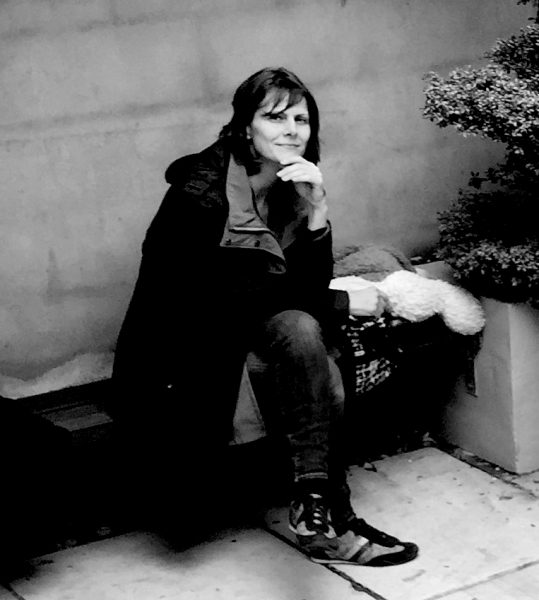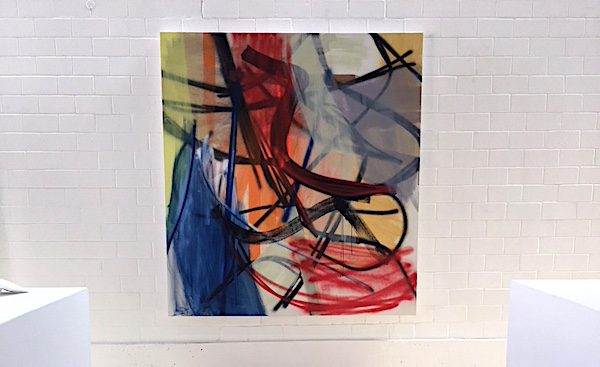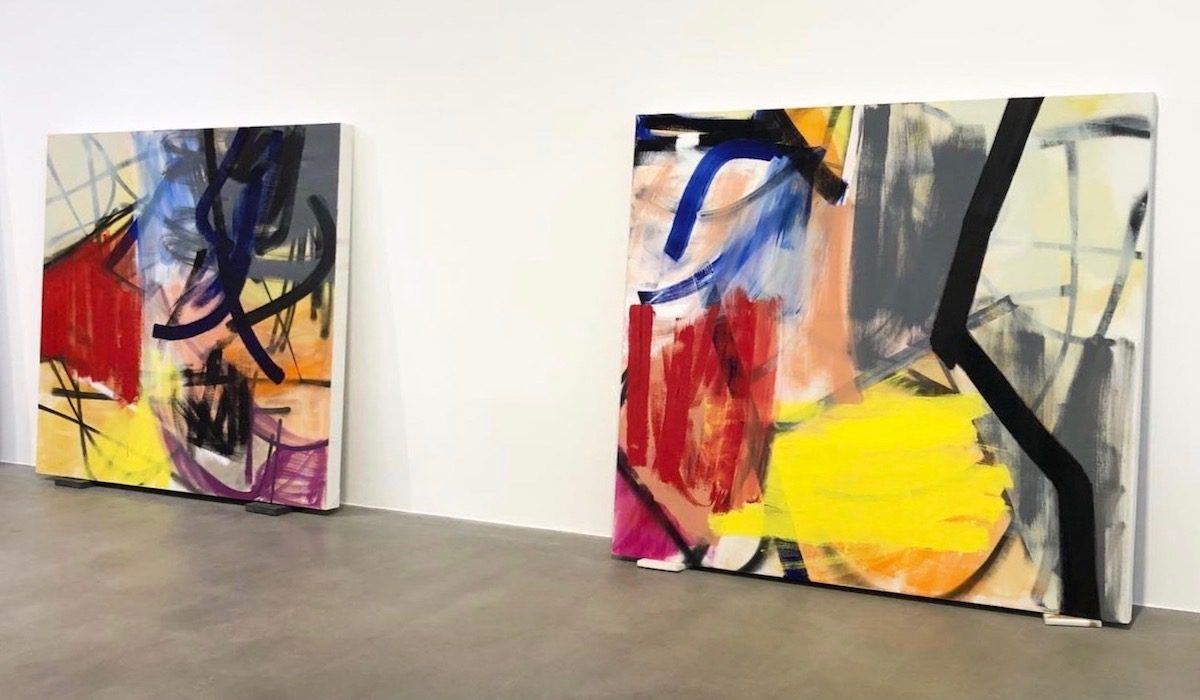Ahead of her first solo show at Blain|Southern, Berlin, a key must-see during Berlin Gallery Weekend, Paul Carter Robinson chats to Liliane Tomasko about her practice.
Tomasko’s work has always been anchored in the physical realities of domestic life
Over the last twenty years, Liliane Tomasko has created abstract painting, sculpture and photography that examines places of domesticity. She has fashioned a unique and recognisable abstract language. Sometimes, her works explore the material qualities of household objects and soft furnishings—past bodies of work have explored hanging dresses and coats, ‘stacks’ of material, paper bags, curtains drawn before darkened windows. Tomasko’s painting has become increasingly abstract as her career has progressed, gradually amplifying its subject matter to the point where perception is stalled.
Liliane Tomasko (b. 1967 Zurich, Switzerland) begins her painting process by taking close-up Polaroid photographs of prosaic objects such as unmade beds, window frames or piles of clothes. She paints from the photograph, applying impastoed layers of oil paint to linen, cropping the frame and merging colours to abstract the image. These illusive patterns immerse us in the fibre of everyday life. Tomasko chooses the domestic experience specifically as route to connect with a protective energy that she describes as distinctly female.
Could you describe your practice and the 3 Ms, Medium, Material and Motivation?
I consider myself primarily a painter who works in oil and acrylic on linen but also explores other media such as video, sculpture and photography in order to better understand and communicate what I am exploring.
I am attracted to ideas of the interior, as manifested in the unconscious, in dreams and sleep. The bed in particular, with all its implications of hosting humanity’s most impacting events, has been a great source of inspiration for many years.

Who do you consider to be your main influences?
Wassily Kandinsky, Paul Klee, Pierre Bonnard, Edouard Vuillard, Jan Vermeer, Georges de la Tour, J.M.W. Turner, Edvard Munch, Sonya Delaunay-Terk, Joan Mitchell, Louise Bourgois, Willem de Kooning, and some film-makers, such as David Lynch and Andrei Tarkovsky.
You’ve lived in many places how has this impacted on your work?
The fact that I have lived in various countries, and having had exposure to different cultures has made me realise how important it is to find a subject matter that is ordinary enough to be of interest to a variety of people. Something that can be accessed by most, but can act as a platform for exploring deeper human issues.
Where do you feel most at home?
I feel home in many places. Europe obviously is my natural home, where I feel culturally connected without having to extend myself. But now I also have a sense of coming home whenever I return to the US from travelling elsewhere. I love arriving in places; it’s my favourite part of living a somewhat nomadic life.
My closest connection to place and a sense of home, however, is when I am with my family, or in nature.
Do you consider yourself a feminist? If yes, how does this manifest in your work?
I would perhaps consider myself a reluctant feminist. Possibly because I am not entirely sure what it means to be a feminist, and perhaps because I don’t want my work to be hijacked by politics. Does the fact that I have a career and a husband who shares child-rearing 50/50 make me a feminist? Or does it make my husband a feminist? My sense has always been that gender relations are complex, sometimes difficult yes, but potentially deep and beautiful. And that complexity has to be protected.
My interest is in the notion of the feminine, the female psyche and its relationship to the domestic, to ritual and repetition.

How much of your work is determined by chance and how much do you control?
There is a fair degree of control in my working process, but chance is a constant and trusted partner in crime. It’s a kind of dance, a give and take, and I see control as an enabler for the little accidents that make a painting vital and touching. Control if you will is the matrix that allows chance to make an appearance. I am always open and sensitive for that to happen.
Does your work contain repetitive gestures that carry thematically from painting to painting?
Yes, my work does contain repetitive gestures which are carried thematically from painting to painting. Their source is the drawings of unmade beds, which I have used as an underlying structure for my paintings since roughly 2014. These are the constant elements in my work, the lines that are extracted from the sleep ruffled bedlinens and carried onto the canvas in spray, oil or acrylic as structures that hold everything in place.
What do you see in the future for your artistic evolution?
I see myself exploring other media with greater frequency, video and sculpture in particular.
Liliane Tomasko: ‘a dream of’ 28 April – 16 June 2018 Blain|Southern Berlin

